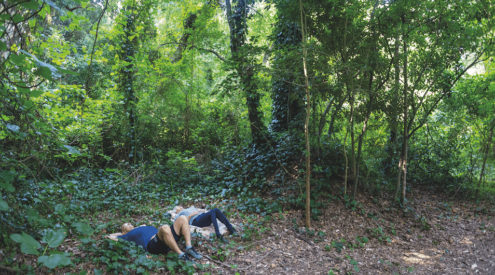Five US states have limited or banned the release of balloons into the air and another eight states are considering imposing restrictions after recent reports on the harmful environmental impact of the debris, especially for birdlife.
Alliance for the Great Lakes, a nonprofit environmental organisation, conducted a survey and found that more than 18,000 balloons, balloon fragments or balloon strings were strewn across the shorelines of America’s Great Lakes between 2016 and 2018.
The survey was initiated by Lara O’Brien, a student at the University of Michigan’s School for Environment and Sustainability. O’Brien referred to a recent study conducted at the University of Tasmania, which shows that balloon fragments are a concerning threat to wildlife. Although all plastic pollution is problematic, the study revealed that balloon debris is 32 times more likely to kill birds than hard plastics.

Researchers studied the cause of death of 1,733 seabirds from 51 species and found that one in three of the birds had ingested marine debris.
‘Although soft plastics accounted for just 5% of the items ingested they were responsible for more than 40% of the mortalities.’
‘Balloons or balloon fragments were the marine debris most likely to cause mortality, and they killed almost one in five of the seabirds that ingested them,’ reported PhD student Lauren Roman, who led the study.
‘As similar research into plastic ingestion by sea turtles has found, it appears that while hard plastic fragments may pass quickly through the gut, soft plastics are more likely to become compacted and cause fatal obstructions,’ Roman added.
Also read: Walter Sisulu Botanical Gardens bans balloons
Christina Trapani, a beach cleanup volunteer who has helped track balloon waste in Virginia, spoke to the Detroit Free Press about the issue.
‘One balloon found in Chesapeake Bay was marked as coming from Kansas, about 1,400 miles [2,253km] away, and was still partially inflated, she said. In December 2012, an elementary school class in Derby, England, released 300 balloons with notes. The balloons were found in the Netherlands, Denmark — and one made it to New South Wales, Australia, more than 10,500 miles [nearly 17,000km] away, three months later.’
‘People don’t think about it as being litter. (But) if it goes up, it’s going to come down sooner or later,’ Trapani said.
The Balloon Council, a New Jersey-based group representing balloon manufacturers, has reportedly spent at least $1 million (almost R15 million) to prevent laws being passed in the US that ban the release of balloons into the air.
Images: Unsplash


















